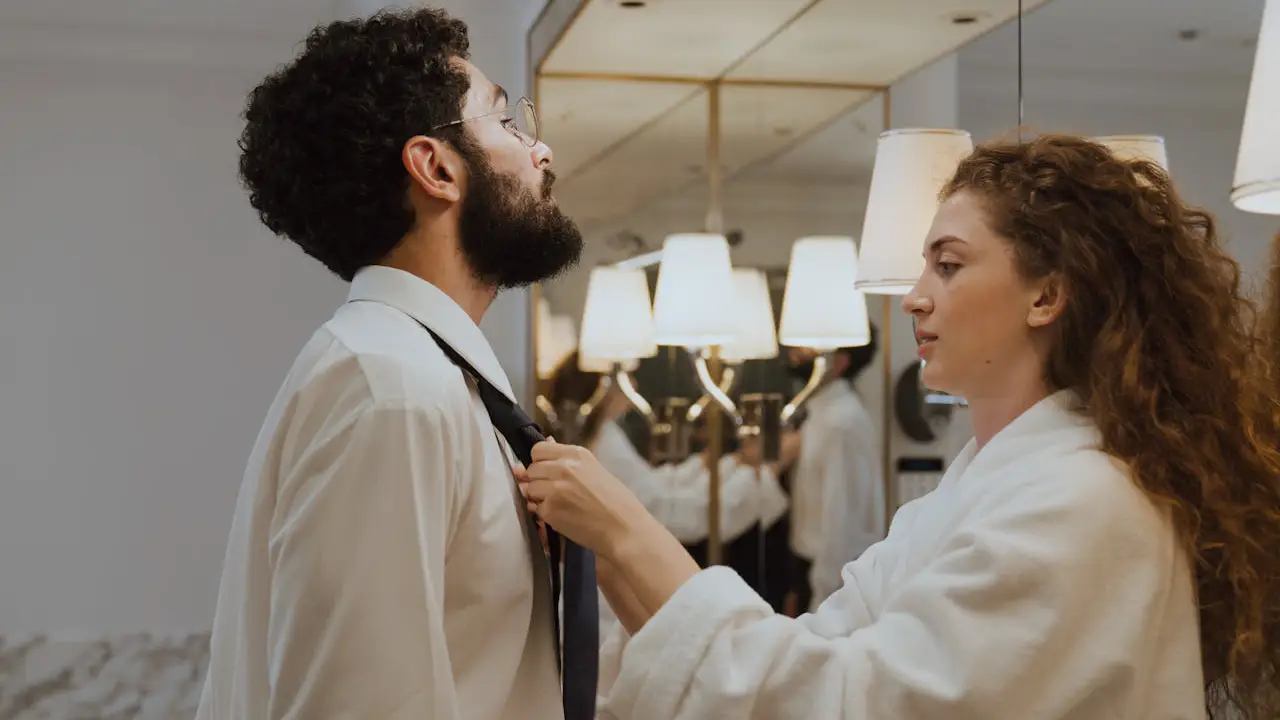Embarking on a journey through the diverse landscape of tie knots for Indian occasions is akin to navigating a colorful labyrinth of tradition, elegance, and personal style. From the solemnity of weddings to the exuberance of festivals, the tie serves as a quintessential accessory, offering a canvas for self-expression and cultural reverence. In this guide, we unravel the intricacies of tie knots tailored for the vibrant tapestry of Indian events, ensuring you stand out with sophistication and flair.
Understanding the significance of each knot goes beyond mere aesthetics; it embodies respect for the occasion and acknowledges cultural nuances. Let’s delve into the realm of tie mastery, where every knot tells a story.
The Classic Windsor Knot:
Originating from the distinguished corridors of British aristocracy, the Windsor knot exudes timeless elegance and authority. Its symmetrical shape and substantial presence make it ideal for formal Indian gatherings such as corporate events or gala dinners. Begin by draping the tie around your neck, ensuring the wide end hangs significantly lower than the narrow end. Cross the wide end over the narrow end, loop it under and through the neck loop, then bring it across the front. Complete the knot by threading it through the horizontal loop and adjusting for a snug fit.
The Versatile Four-in-Hand:
Named after the carriage drivers of yore, the Four-in-Hand knot embodies a casual yet refined charm, making it a versatile choice for a spectrum of Indian occasions. Its asymmetrical structure lends a touch of effortless sophistication, perfect for cultural festivals or casual gatherings with friends. Start by crossing the wide end over the narrow end, then loop it behind and over the narrow end once more. Pass the wide end through the loop near your neck, then pull it down and tighten to achieve the desired knot size.
The Regal Prince Albert Knot:
Channeling regal poise and understated grandeur, the Prince Albert knot offers a distinctive silhouette that commands attention without overwhelming the ensemble. Ideal for traditional Indian weddings or religious ceremonies, its compact form exudes reverence and dignity. Begin by positioning the tie around your neck, with the wide end on the right and the narrow end on the left. Cross the wide end over the narrow end, then loop it under and through the neck loop. Pass it across the front, then bring it under and through the horizontal loop. Adjust as needed for a snug and dignified knot.
The Trendy Eldredge Knot:
For those seeking to make a bold statement amidst the vibrant festivities of Indian celebrations, the Eldredge knot offers a striking fusion of modernity and sophistication. Its intricate weave of loops and twists symbolizes the dynamic spirit of contemporary fashion, perfect for cocktail parties or cultural soirees. While more complex to master, the payoff is undeniable, elevating your ensemble to new heights of sartorial excellence.
The Artisanal Trinity Knot:
As the name suggests, the Trinity knot embodies a sense of divine craftsmanship and artistic flair, making it a captivating choice for Indian occasions steeped in tradition and cultural heritage. Its intricate interplay of three symmetrical loops symbolizes unity and harmony, echoing the sentiments of togetherness and community. While slightly challenging to execute, the end result is a masterpiece of style and sophistication, sure to leave a lasting impression on all who behold it.
Practical Tips for Tying Knots:
While mastering the art of tying knots may seem daunting at first, a few practical tips can simplify the process and ensure a flawless result. Begin by selecting a tie of appropriate length and fabric, opting for rich silks or textured blends that drape elegantly and hold their shape well.
When tying the knot, maintain a firm yet gentle grip on the fabric, ensuring even tension throughout the process. Remember, patience is key; a rushed knot is bound to unravel, whereas a carefully crafted one exudes confidence and poise.
For those new to the world of tie knots, visual aids can be invaluable. Consider referring to online tutorials or instructional videos that provide step-by-step guidance, allowing you to follow along at your own pace. With practice and perseverance, you’ll soon master the art of tying knots with finesse and flair.
Tips for Maintaining Tie Knots:
Caring for your ties is essential to preserving their pristine appearance and longevity. To ensure lasting quality, it’s recommended to store ties rolled rather than folded, minimizing creases and preserving the fabric’s integrity.
When it comes to cleaning, exercise caution to avoid damaging delicate fabrics. Spot cleaning with a gentle detergent and warm water is often sufficient for minor stains, while professional dry cleaning is recommended for more stubborn marks or thorough refreshment.
By following these simple guidelines, you can ensure that your tie knots remain a testament to your impeccable style and attention to detail, ready to adorn you for countless memorable occasions to come.
In conclusion, mastering the art of tie knots for Indian occasions is a journey of self-discovery and cultural appreciation. Whether opting for the classic elegance of the Windsor knot or the avant-garde allure of the Eldredge knot, each style offers a unique opportunity to express your personality and pay homage to the rich tapestry of Indian heritage. So, next time you don your tie for a special occasion, remember to knot with care and confidence, for it is not just an accessory, but a symbol of tradition, style, and reverence.
What’s your favorite tie knot for Indian occasions? Share your thoughts and experiences in the comments below!





